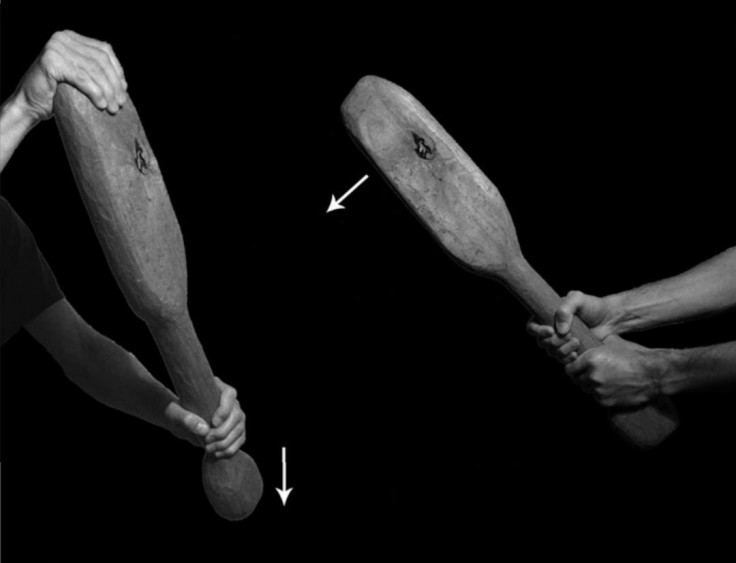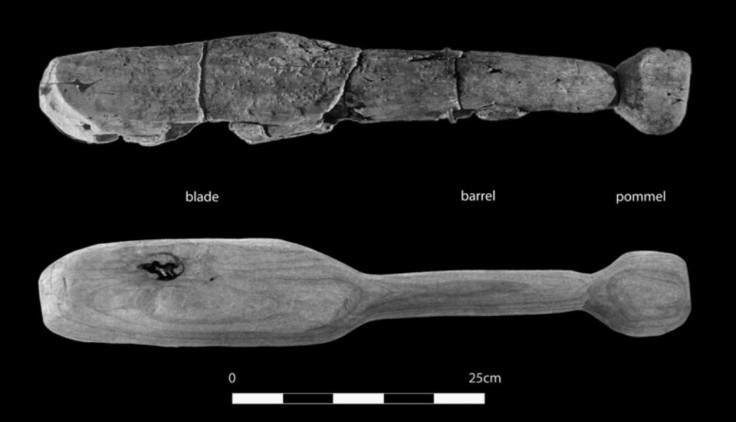Archaeologists Recreate Ancient Murder To Watch How People Were Beaten To Death

An ancient wooden club that was pulled out of the River Thames in England was once used to beat another person to death, according to scientific recreations of the violence.
The club dates back more than 5,000 years and is nicknamed the "Thames Beater." It was efficient at its murderous task, potentially killing with a single blow.
For their study in the journal Antiquity, researchers replicated an attack with the weapon to see what would happen when someone swung it as hard as possible. They were beating on an object that would imitate a human head, spheres of synthetic bone covered in rubber skin and filled with ballistic gelatin, a material that simulates muscle tissue. Once a model of the Thames Beater was used to deliver blows to the spheres, both with the blade and with the bottom of the handle, the scientists studied the fracture patterns.
Although this specific club is from Britain’s fourth century BC, it is typical of the wooden clubs that were used as weapons for millennia, and are still used today.
According to the study, striking with the blade was capable of creating “extensive blunt force trauma” while the pommel of the club, knocked downward onto the head, would have created “long linear fractures extending from the point of impact.”
It could be that this is how Stone Age people murdered one another, as the scientists saw similarities between the injuries caused by the double-handed blade strikes — the classical way one would think to hold a bat when bludgeoning another person — and violent injuries sustained during that period of history of which scientists have previously found evidence. That includes a Stone Age site in Austria called Asparn/Schletz where the skeletons recovered may have belonged to mass murder victims.
“The clearly lethal nature of the tested wooden club fits the presumed motivation of intent to kill,” the scientists wrote in their study.
However, it is unclear whether someone could also survive an attack with the Thames Beater.
“If so, an interpretation would be required that considered why some individuals were able to survive attacks with such a lethal tool,” the study explains. “Alternatively, different weapon types might suggest different types of violence.”
According to the study, the researchers are testing some of those other ancient weapons.
It may sound like fun and games to use ancient murder clubs to beat on fake human heads, but the process has scientific and historical value. The team explained that better understanding violence is a way to get at “the meaning of the social and cultural contexts of such events.”

“Although the Thames Beater is a single artifact from England, it provides a good example of the wooden clubs that could have been crafted during the European Neolithic and beyond, and is broadly representative of this general category of implement,” the study says. “The strong correlation between the experimental injuries inflicted by the Thames Beater and the archaeological cases from Asparn/Schletz lends potential support to the theory that wooden clubs were used as short-range weapons of interpersonal violence in Neolithic Europe.”
© Copyright IBTimes 2024. All rights reserved.





















